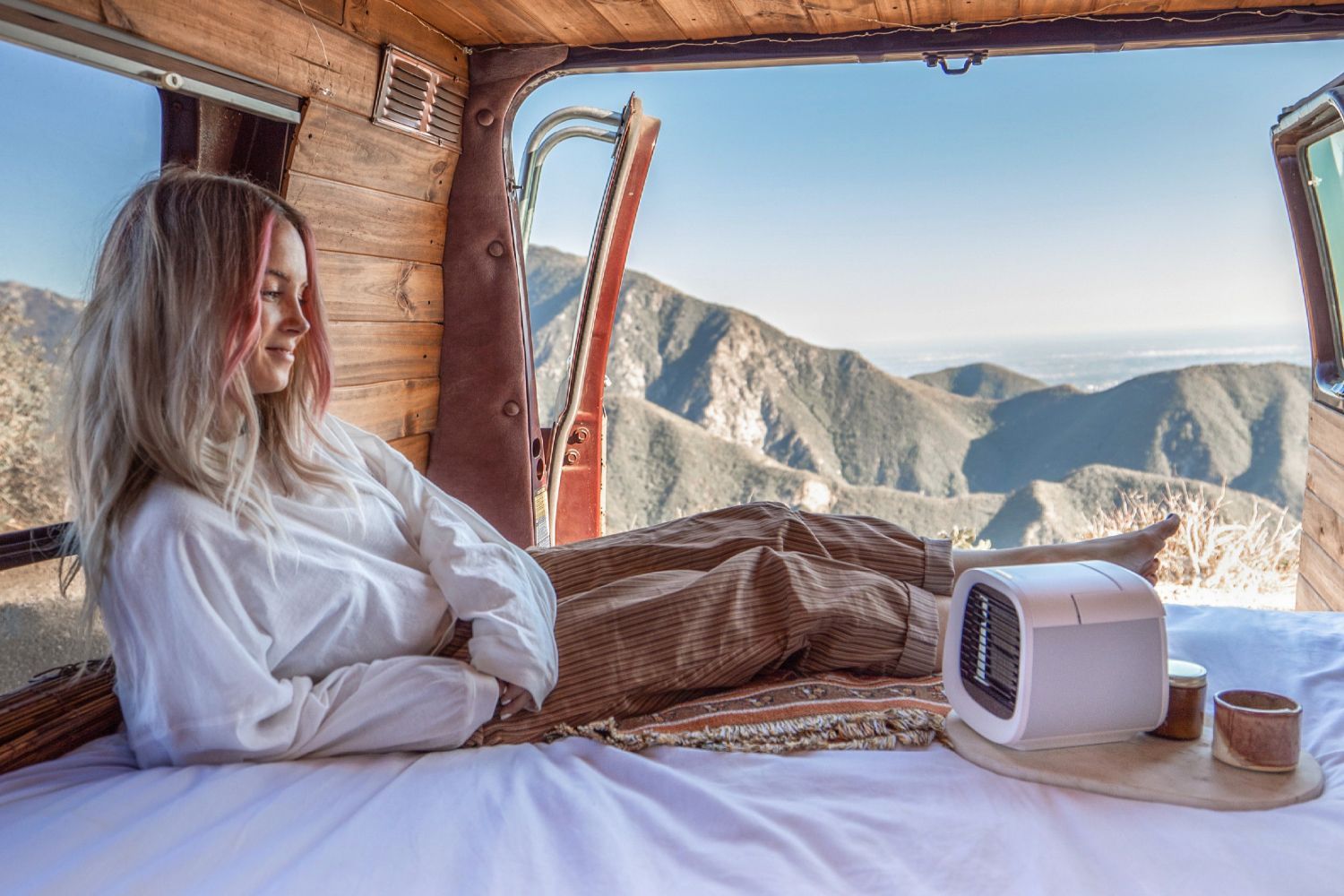An RV (Recreational Vehicle) can be your best go-to friend during summer. However, it can also turn into a sauna if you're not careful. Sitting too long in the sweltering sun, your RV will become impossible to stay in. There are ways to keep a travel trailer cool in the summer while traveling — a few adjustments, some life hacks, and knowledge on how the cooling works.

evaCHILL
The most effective cooling device
Does it seem like the best way to solve the problem is to turn up the RV air conditioner? Don't rush into it. This solution has its obvious drawbacks. Over time, using an AC inside your RV will deplete your battery and cost more money on all the energy.
Thankfully, there are more solutions on how you can keep RV cool without AC.
Read this guide on keeping RV cool in extreme heat for all the available alternatives!
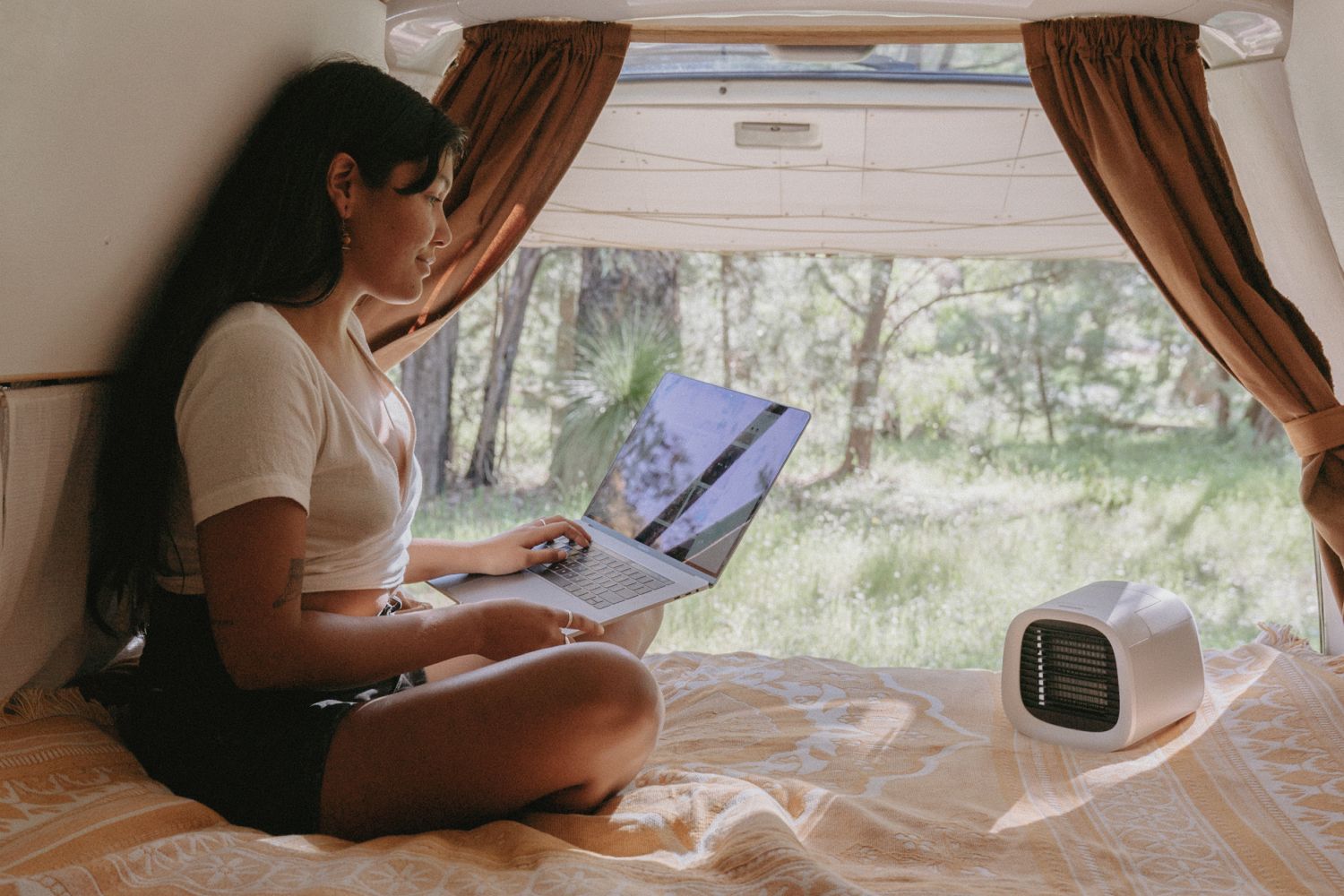
Tricks on How to Keep RV Cool in Summer
There are dozens of ways to reduce the heat inside your camper. For example, some experts may recommend installing 3M crystalline film in the windshield of your RV, balancing air conditioning zones, or buying an exterior RV windshield shade.
In our overview, we've selected the easiest and most efficient hacks to keep RV cool in summer, with the best results and the least investments. So here is a sneak peek at the eight best ways to keep your camper cool in the heat:
- Relocate your RV
- Install roof vent covers
- Use portable air cooler
- Use shades
- Keep A/C filters clean
- Buy LED bulbs
- Cook alfresco
- Close windows when it's hot
- Install reflective insulation
- Upgrade window treatments
- Enhande underbelly insulation
- Use a dehumidifier
- Park strategically
- Ventilate with roof vents and fans
- Seal and weatherstrip
- Use cooling Mattress toppers and bedding
- Avoid using heat-producing appliances
- Regular maintenance of the cooling system
Read more to get the details how to keep your rv cool.
1. Relocate your RV or change the orientation
One of the hacks for keeping an RV cool in extreme heat is to simply move your camper van to another location. If you're camping in hot spots (like somewhere in Arizona), it's worth checking which side your RV is facing. The RV windshield shouldn't be facing east or south. The best decision is to choose north or slightly northwest if there isn't much sun in those spots. The goal is to keep RV cool and avoid your rig facing direct sunlight for most of the day.
Alternatively, you can find the location where the trees cover the western side of your rig and use the awning to cover the parts of your van that will still stay under the direct sun.
You can also check the local weather conditions and open the windows when it's windy to get some fresh airstream inside your RV and cool it down.
Read also: 7 Best Portable Boat Air Conditioners in 2022
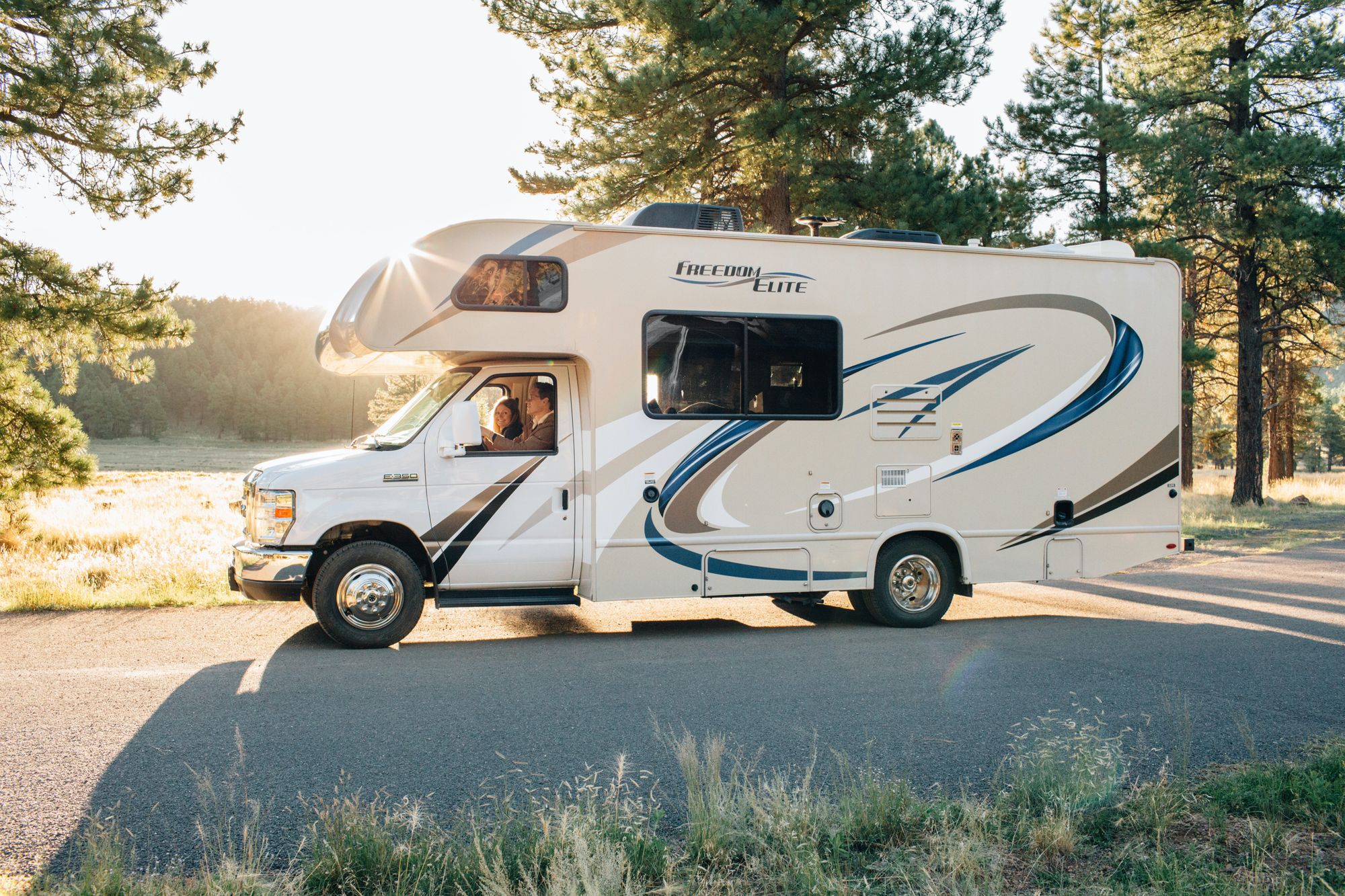
2. Install Roof Vent Covers for Better Air Circulation
One of the best RV air conditioning tips is to install roof vent covers with a built-in fan. The fan, which plugs directly into a power source, will help pull air through the roof vents and push it into your RV. During warm days when you're parked outside at an event or in a campground, these roof vent covers will keep your RV cooler.
Downside: this cooling method requires a power supply for the built-in fan.
3. Use a Portable A/C
If you're planning on staying in your RV for a few days, make sure you know in advance how long you'll be parked before you turn off the engine. If that time is approaching or has already arrived, the best way to keep your camper cooler is to invest in a portable A/C unit.
You can move them around efficiently, and they will serve you during several years of constant use with proper maintenance. However, you must size the RV air conditioner correctly; otherwise, you'll end up wasting energy.
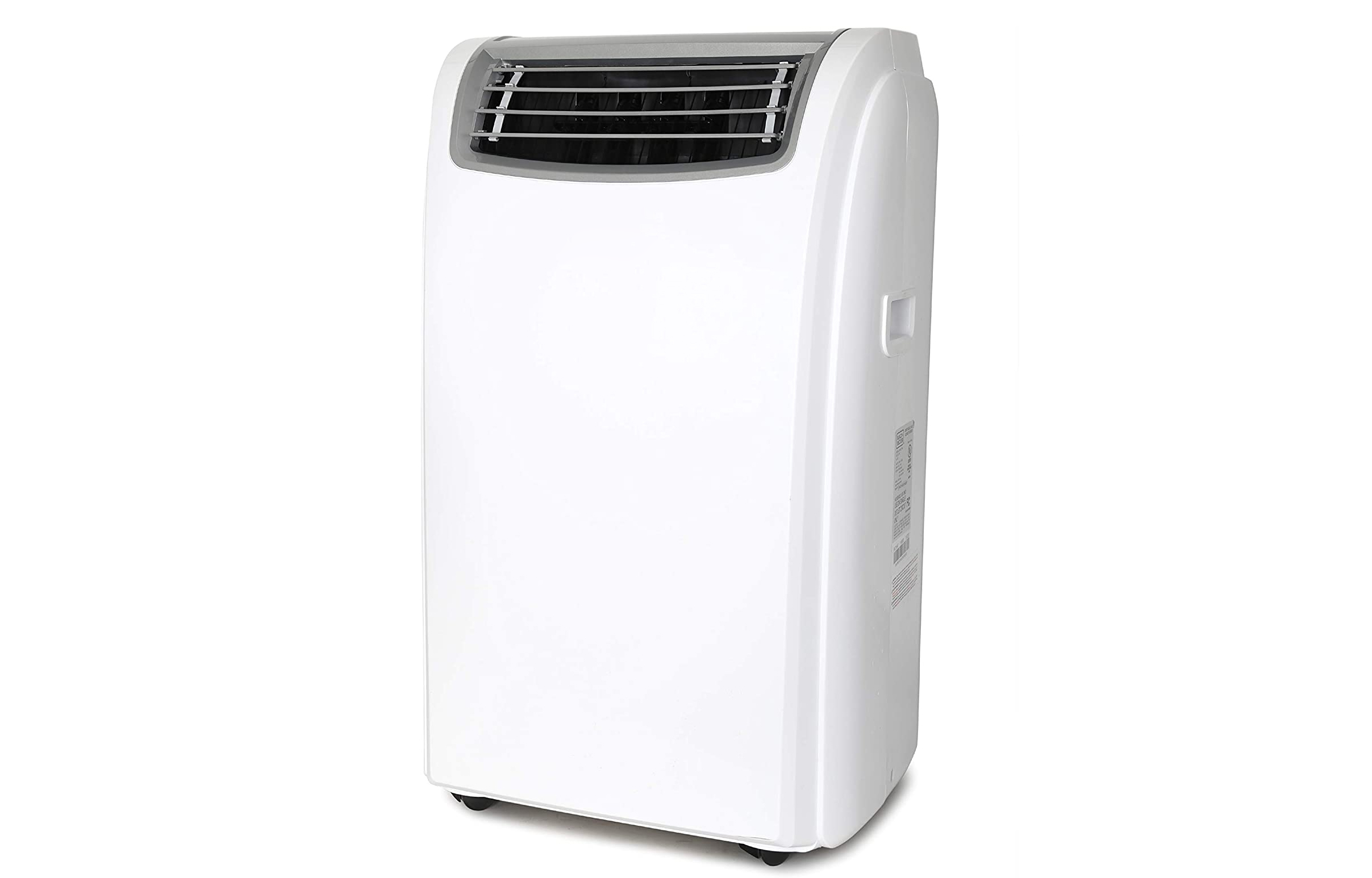
Downside: some portable ACs are expensive, and it can be a waste of money if you only use them a few days per year.
Another alternative that is energy-saving and efficient is to cool your personal space in the RV with a portable air cooler. The best parts about portable air coolers are their price, size, user-friendliness, and the fact that they cover all the key air conditioning functions. This can also be a useful hack if your main RV air conditioner is broken. To check their models and prices, visit the Evapolar shop.
4. Use Shades to Prevent Heat Gain
One more among the RV cooling tips is adding shades or covering windows with curtains or blinds. These measures reduce heat gain and keep the excess light out, which is a nice perk if you stay in an area for an extended time.
Before going on a trip, always check whether your curtains are in good working order and create a thick roof shade for your camper. You can improve the natural cooling system by adding an awning, extra blankets, and parking your RV under the tree or in a natural shade.

5. Clean Your A/C Filters
You can do another thing to keep a travel trailer cool in summer. Start by simply cleaning out all the dirt and grime that can clog up your air conditioner. Dirt acts as an insulator, which keeps heat in rather than out. Not to mention that it can negatively impact your AC device's functioning and lifespan.
Most RVs come with a built-in filter that can be easily removed for cleaning and readjusted back into place. It's worth washing the dirt out once a week or checking the filters before a long trip to timely remove the broken ones.
6. Swap Incandescent Light Bulbs for LED Bulbs
To keep your RV cool in the summer, consider replacing your incandescent bulbs. LED bulbs heat up less, and they can shave a few degrees off your cooling bill. Even though they are more expensive up front, they'll save you money in the long run. LED bulbs use way less electricity — in some cases half as much as incandescent light bulbs.
By picking LED bulbs, you will keep your RV cooler and save money on electricity. Of course, the same arguments apply to turning off the television and other electronics you usually use inside your RV.
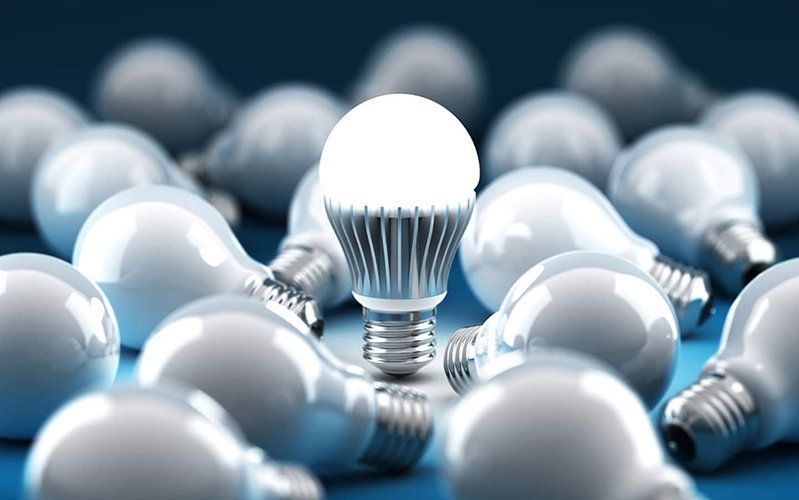
7. Try Alfresco Cooking
In addition to taking active measures to insulate RV for summer, you can plan some energy-saving and RV-cooling methods in advance.
For example, choose food that doesn't need a stove or an oven for cooking. If you still want to do some grilling inside your RV, choose alfresco-style grilling recipes and cook on inexpensive portable cooktops instead.
To avoid overheating the grill, remember to properly clean it before and after use. Also, use paper towels when cleaning them afterward; it will save time and water and avoid having residue from dish soap on surfaces where food might come in contact later. Finally, turn off the grill as soon as possible to let it cool outside your camper.
8. Close Windows in the Morning
This small yet efficient trick on how to cool RV in summer is a working solution to find a compromise between light and heat. First, try closing your windows at dawn so that you keep the cool air inside — it is more efficient than exposing the insides of your RV to the sun all day. Then, you can open the windows again close to sunset time.
It may seem counterintuitive at first, but using blankets or sheets and towels will help you save money on air conditioning. For example, instead of blasting AC when it's 100 degrees outside, try rolling up some blankets around doors and windows that are exposed to sunlight. This will prevent some of that heat from sneaking into your trailer and allow for temperature control. You can also try placing reflective tarps outside of windows, especially those facing southwest.
9. Install Reflective Insulation
Adding reflective insulation panels, particularly in the ceiling and windows, can significantly reduce heat absorption. These panels reflect sunlight away, keeping the interior of your RV cooler.
10. Upgrade Window Treatments
Consider installing blackout curtains or thermal blinds. These can help block out sunlight and heat, maintaining a cooler temperature inside your RV.
11. Enhance Underbelly Insulation
Improving the insulation in your RV’s underbelly can prevent heat from the ground from warming up your space, especially if you’re parked on hot surfaces like asphalt.
12. Use a Dehumidifier
Lowering humidity levels inside your RV can make the air feel cooler and more comfortable, especially in regions with muggy weather.
13. Park Strategically
Beyond seeking shade, position your RV so the side that receives the most sun exposure, usually the windshield, faces away from the direct sunlight during the hottest part of the day.
14. Ventilate with Roof Vents and Fans
Even if you've covered the basics of vent covers, enhancing ventilation by installing additional roof vents or high-powered fans can help expel hot air and draw in cooler air during the evenings.
15. Seal and Weatherstrip
Check and maintain seals around your RV’s doors, windows, and any slide-outs. Proper sealing prevents warm air from entering and cool air from escaping.
16. Use Cooling Mattress Toppers and Bedding
Switch to breathable, moisture-wicking bedding materials like cotton or bamboo. Cooling mattress toppers can also provide relief from the heat at night.
17. Avoid Using Heat-Producing Appliances
Minimize the use of heat-generating appliances like the oven, dishwasher, or dryer during the hottest parts of the day.
18. Regular Maintenance of the Cooling System
Regularly check and maintain the entire cooling system, not just the air filters. Ensure the coolant is filled, and the system is checked for leaks or mechanical issues.
These additional strategies can help make the interior of your RV cooler in summer, making your travels more comfortable and enjoyable.
Can You Use a Portable Air Cooler in an RV
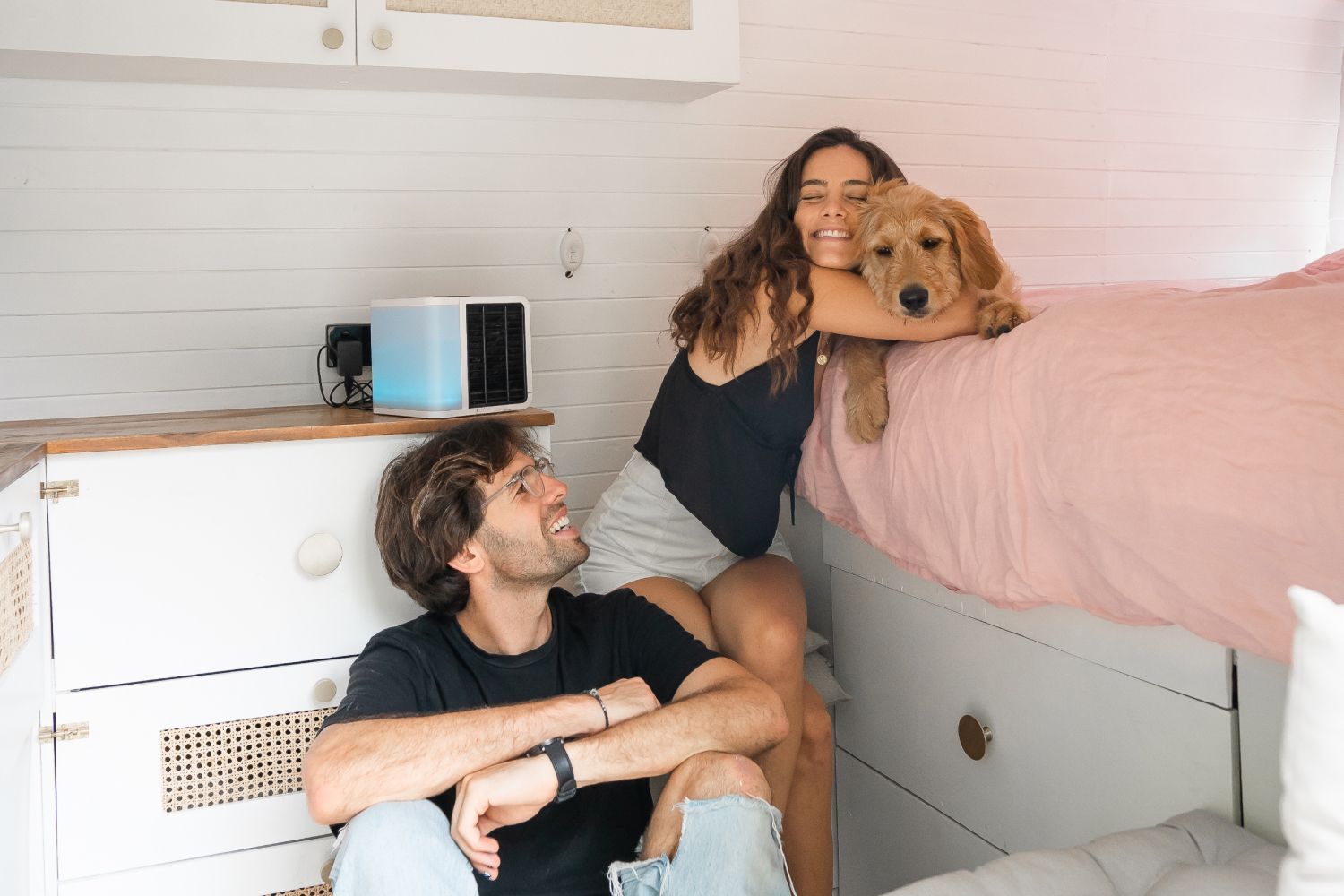
If you still need a powerful tool to cool your camper, we recommend paying close attention to portable Air Cooler. They have several advantages compared to classic air conditioners.
Today, portable air coolers are window units adapted for all kinds of indoor spaces. You can use them in many different places, including RVs. So, if you're planning to stop in a specific location for a long time, you can rely on portable air cooler both in summer and winter:
- Easy to install. You can just pick a portable air cooler at home and bring it to your RV.
- Efficient. The cooling power of these devices can decrease the temperature inside by 7-10°C.
- Extra features on top of cooling. Portable air coolers can also purify and humidify the air. When it comes to EvaCHILL Personal Air Cooler, the device can also serve as a night light, which will help you save on electricity and keep your camper cool at the same time.
- Easy to control. When you order advanced devices like Evapolar evaSMART evaporative cooler, you can manage your air-cooling system with a user-friendly smartphone application.
- Portable and compact. Compared to large air conditioners, portable AC units cut utility costs, solve the problems with cycle length, and thanks to their portability, you can easily move them around.
Suitable Portable Coolers for Your RV or Camper Van
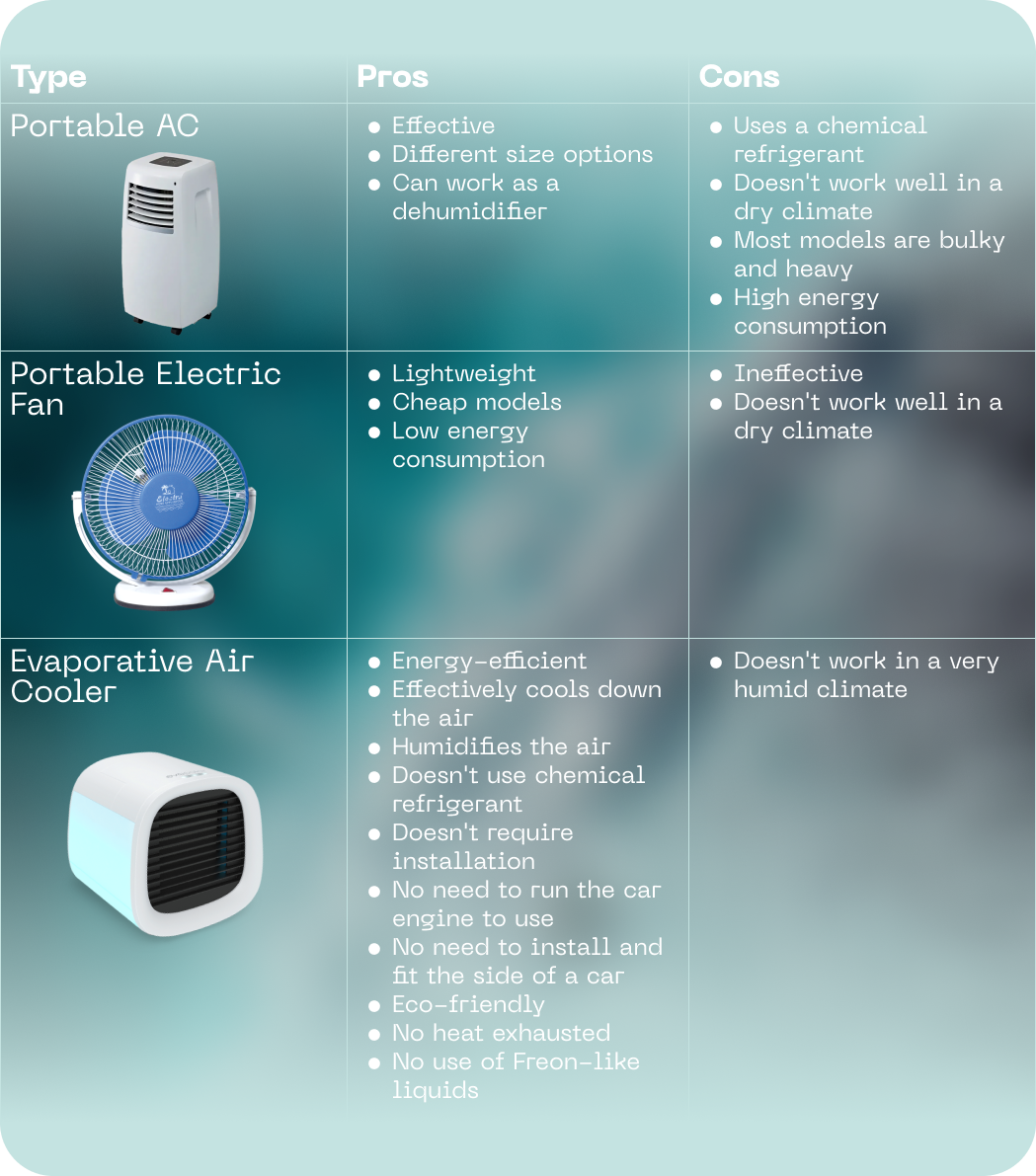
For more information about portable AC unit alternatives, check our blog post about the best air coolers for RV and cars.
Evapolar Is Your Perfect Choice to Pick Up the AC
Are you considering purchasing a portable Air Cooler unit so you can solve the problem of how to keep cool inside your RV? Here's everything you need to know about Evapolar, the top solution for the heat inside your RV.

With portable evaporative air coolers from Evapolar, you can experience these advantages:
- Easy installation. The options to fill the portable battery include powering by a power bank, a laptop, or a power socket via USB.
- Energy-efficient. The energy consumption is from 7W to 12W, around 100 times less than a regular AC.
- Minimum noise level. Evapolar air coolers are almost silent.
- Fair prices. Evapolar devices are cost-effective. In particular, evaCHILL costs $99, evaLIGHTplus costs $149, and evaSMART costs $229.
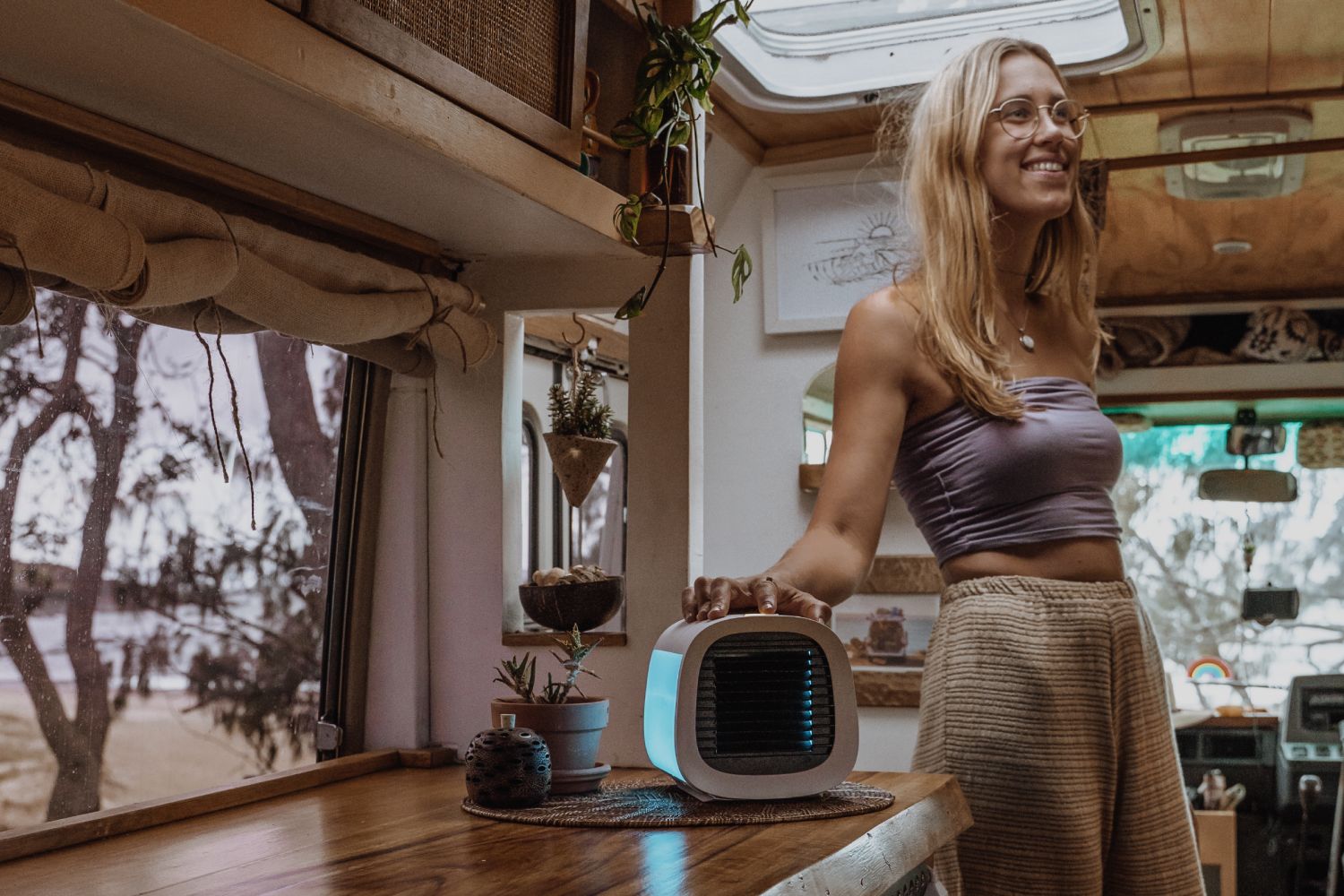
Forget about Problems with Keeping Your RV Cool in Summer!
As you can see, the task of keeping your camper cool has several solutions, from picking the right location to getting a portable air cooler with the functionality that fits your RV needs. The technology behind Evapolar devices solves the most common problems with overheating and makes your life easier! You can create your perfect cool bubble inside your RV and enjoy the fresh air at any time of the year.
Visit our shop to get more information about all Evapolar products and contact us to ask some specific questions about evaCHILL, evaLIGHT plus, and evaSMART!
FAQ
- What are the most effective ways to keep an RV cool during the summer?
Include tips such as using reflective window covers, maximizing air circulation with fans, parking in shaded areas, and using portable air conditioners or evaporative air coolers.
2. How can I improve the efficiency of my RV's air conditioning unit or air cooler?
Discuss maintenance tips such as cleaning or replacing the air filters regularly, checking the coolant levels, and ensuring the exterior components are unobstructed.
3. Are there any energy-efficient upgrades I can make to help keep my RV cool?
Installing solar-powered fans, upgrading to thermal window treatments, or adding insulation to the walls and ceiling of the RV.
4. What are some natural ways to reduce heat inside the RV without using air conditioning?
Suggest strategies like cooking outside to avoid heat buildup from the stove, using natural shade or awnings, and opening windows during cooler parts of the day to create a cross breeze.
5. Can I use a regular household fan to cool my RV, or do I need something special?
Explain the benefits of using 12-volt fans designed for RV use, which are more energy-efficient for the RV’s electrical system than standard household fans.


